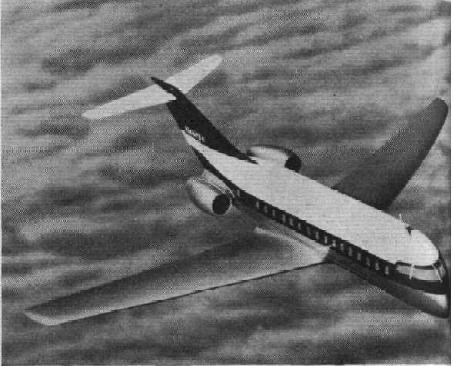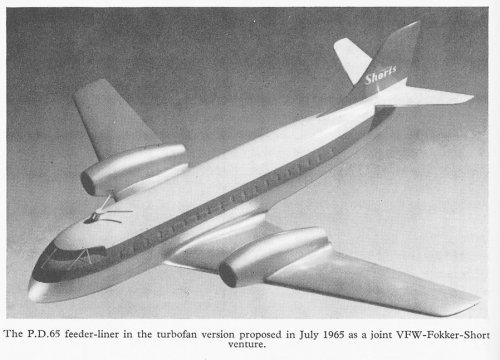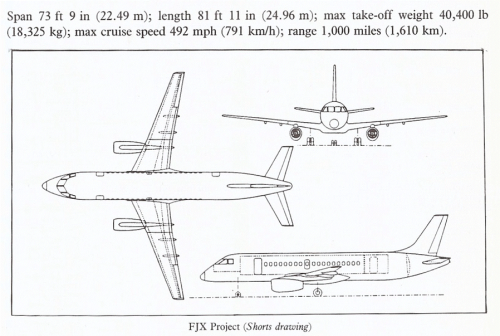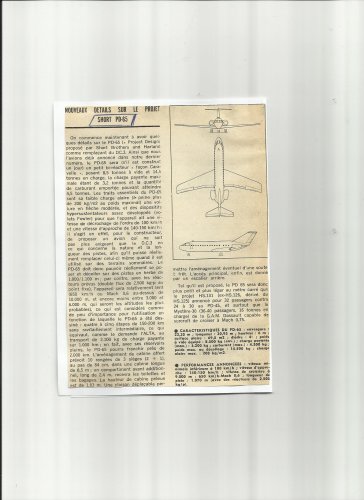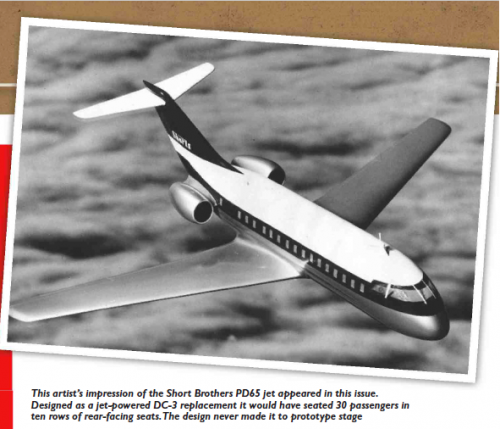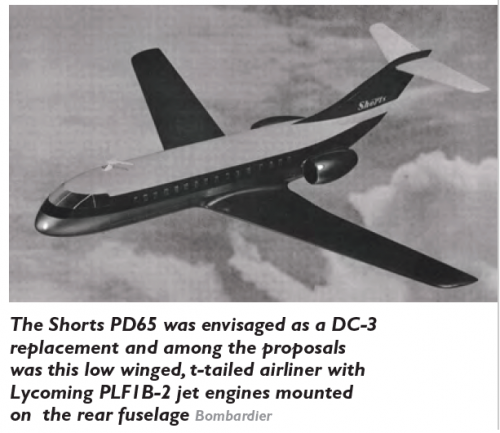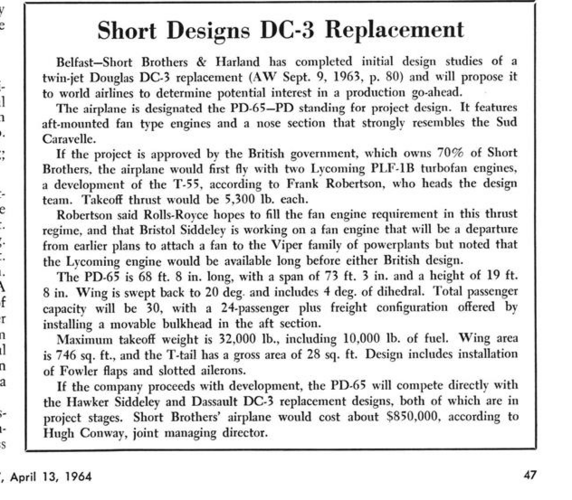from Putnam's 'Shorts', pp. 523-525 :-
P.D.65. In 1961 a market need was established for a DC-3 replacement. Initially to be turboprop powered, later turbofans were preferred, *if* they were available at the same cost.
In 1962 two layouts were examined, both in the weight range 25-30,000lbs, one twin Dart powered, having a cruising speed of 270 kts, and the other, by twin Lycoming turbofans givings a 400kt cruise at a 10% higher operating cost.
Following refinement of the design, a layout with a low wing and overwing mounted turbofans in long nacelles was selected. Since the project specification was similar to the deHavilland DH.136, collaboration between the two was discussed, however, no agreement was reached. In June 1965,Shorts spoke to Fokker and VFW, about collaboration on the VFW.614 project. By November of that year, agreement had been reached.as part of this, the British Government was asked to put up 25% of the funding required. At this point, UK Gov. insisted on Shorts being replaced by Hawker Siddeley, whose DH.136 was wholly different to the VFW.614. As a result VFW and Fokker continued development without a UK partner.
Shorts FJX. Following the success of the Shorts 330 and 360, market research indicated continuing growth in the 20-130 seat category into the 21st century. A decision was made to pursue a twin-turbofan commuter, and design work began in 1986, the FJX being revealed in March 1988. Passenger capacity was to be 44. Dimensions are on the image below, source as above.
cheers,
Robin.

